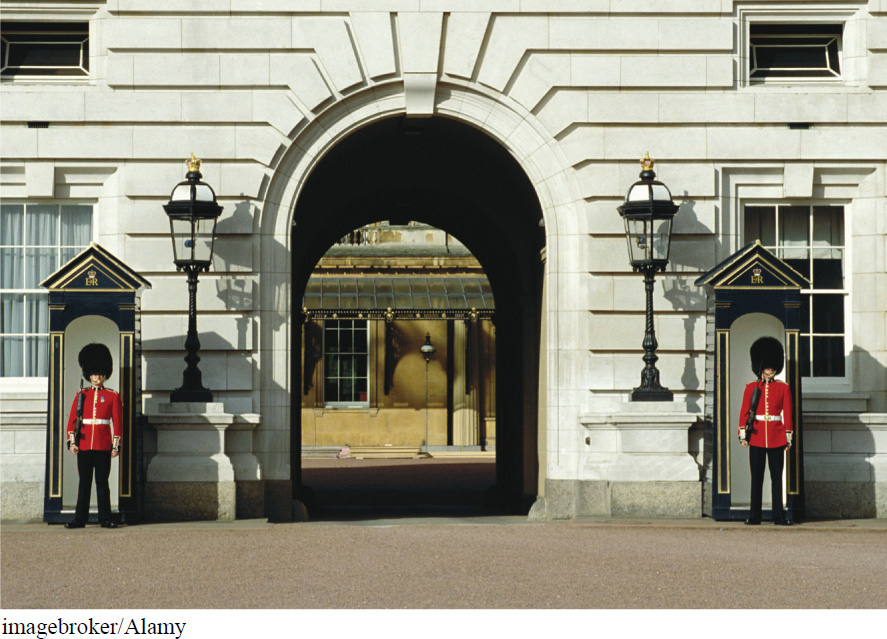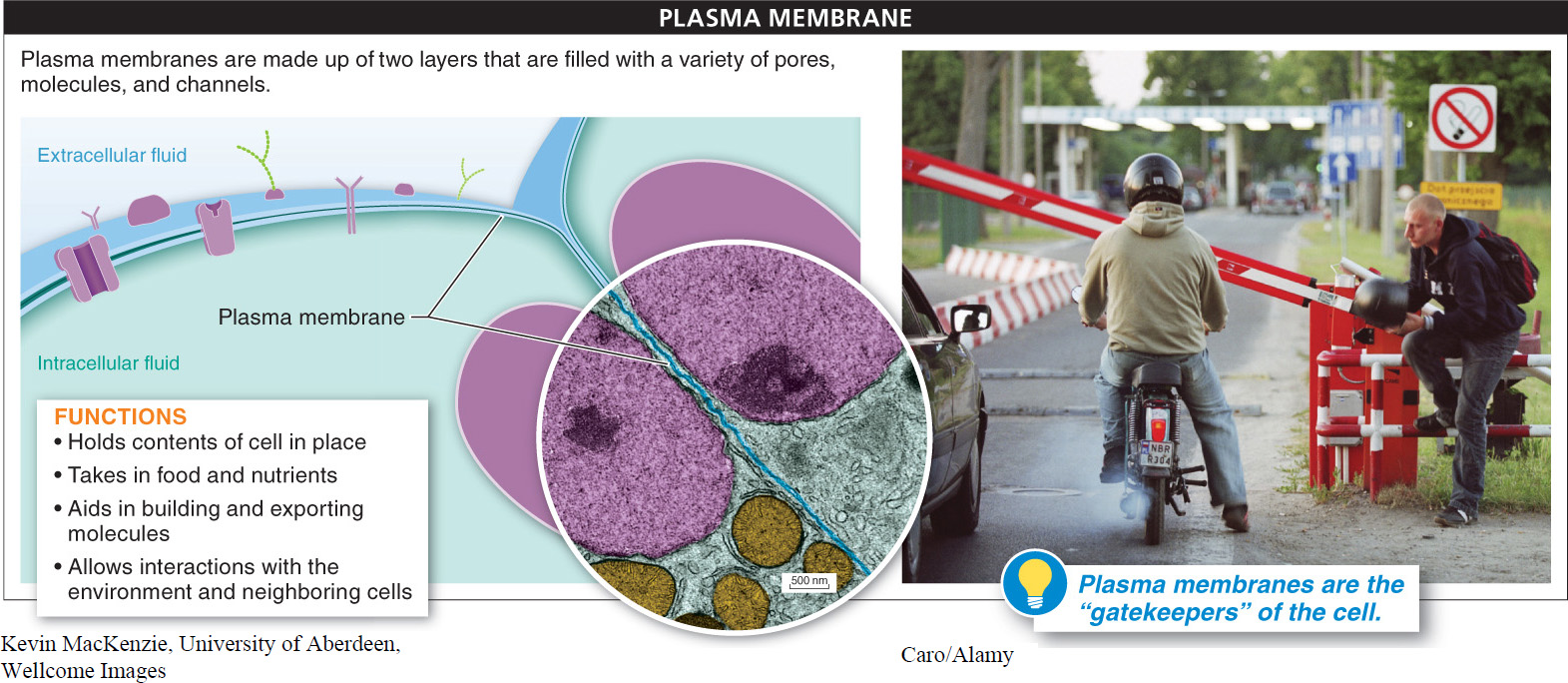3.4–3.7: Cell membranes are gatekeepers.

Just as skin covers our bodies, every cell of every living thing on earth is enclosed by a plasma membrane, a two-

Cells are perpetually interacting with their external environment. And in these interactions, the plasma membranes must perform several critical functions beyond simply holding a cell’s interior contents. The plasma membrane must function in ways that accomplish the following.
95
- The membrane enables the cell to take in food and nutrients and dispose of waste products.
- It allows the cell to take in water.
- It allows the cell to build and export molecules needed elsewhere in the body.
- It mediates communications with the external environment and other cells and adhesion to other cells or surfaces.
- Like a border control checkpoint, it controls the flow of molecules into and out of the cell.
The foundation of all plasma membranes is a layer of lipid molecules all packed together. These are a special type of lipid, called phospholipids, which, as you’ll recall from Section 2-

The split personality of phospholipids makes them good membrane material. Once a large number of phospholipids are packed together with all of their heads facing one way and their tails the other, we have a sheet with one side that is hydrophilic and one that is hydrophobic. In the cell’s plasma membrane, two of these sheets of phospholipids are arranged so that the hydrophobic tails are all in contact with one another and the hydrophilic heads are in contact with the watery solution outside and inside the cell (see Figure 3-
The phospholipids are not locked in place in the plasma membrane; they just float around their side of the bilayer. They cannot pop out of the membrane or flop from one side to the other, because their hydrophobic tails always line up away from any watery solution. Just as similarly charged sides of two magnets push away from each other, so do the hydrophobic tails in the center of the membrane push away from and avoid coming into contact with water molecules. Because the center part of the bilayer membrane is made up of hydrophobic lipids, the solution on one side of the membrane cannot leak across into the solution on the other side. In this way, the plasma membrane forms a boundary around the cell’s contents.
96
TAKE-HOME MESSAGE 3.4
Every cell of every living organism is enclosed by a plasma membrane, a two-
Describe the structure of a phospholipid. How do its two main regions interact with water? How are phospholipids arranged in two layers to form a plasma membrane that interacts with water on both surfaces?